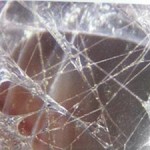During the course of attending massage school at A New Beginning School of Massage, students are given a number of assignments that requiring research and writing. Some of these assignments result in very insightful and well thought out information and decision-making outcomes. I am happy to share some of their assignments for you to enjoy.
1.) What are the types of research found in the massage profession?
Research in massage therapy has been, and is being, conducted on a wide range of patients with varied conditions. Most of the research in the past has included anecdotal experience, case studies or small preliminary investigations that lack the methodological quality to draw firm conclusions regarding the effectiveness of manual therapies. But, there are now larger studies of higher quality, like systematic reviews (reviews of existing literature) as well as federally funded randomized clinical trials studying the effectiveness of massage on chronic back pain, depression during pregnancy, premature/pre-term infancy, symptom management of cancer patients and individuals diagnosed with dementia.
2.) In your opinion, which types of research are valid and why are they valid for the profession?
Because of the nature of massage, it doesn't lend itself very well to double-blind, placebo controlled studies (at least in regards to issues like fascial stretching). A drug/pharmaceutical study can easily replace one capsule/pill with another so that the subject and clinician are both blinded as to which is the medication and which is the placebo. However with manual therapies, a "sham" treament can be developed (eg. light touch massage), but it can't be assumed to be compeltely wthout therapeutic effects. It is also difficult to blind the therapist, who certainly knows which treatment he/she is adminstering. But just beause a randomized clinical trial can't be placebo-controlled or double-blinded, doesn't mean it can't be of high quality and make a scientific contribution. Randomized clinical trials of good quality can still be very useful.
3.) What criteria do you use to determine if the information is valid and correct?
I take into account the methodology of the study. Again, the gold standard is the randozmied double-blind, placebo-controlled study. It has the greatest chance for repeatability/reliability. But even though control groups and randomization will lessen validity problems, no method can be completely successful. Any scientific study only puts forward a possible cause for a studied effect. There is always a chance another unknown factor contributed to the findings. However, the scientific community is more likely to accept the findings from this kind of a study.
4.) In your opinion, is research important in the massage profession and why do you think it is or isn't?
Quality scientific investigation is always of value, whether it validates a concept/belief or not. With research has come the realization that many explanations of the past are not supported by evidence. Science-minded clinicians have learned to adapt to this information, dropping outdated and unsubstantiated claims. If the concepts are not supported by evidence or sometimes contradicted by evidence, it is better to accept knowledge and change to fit what is known.
5.) Identify the statement/treatment you choose to research.
Can fascia be stretched to release adhesions? 
6.) Review research literature for a research article or an article that discusses the research findings about that statement/treatment and summarize the information.
7.) Cite your sources:
Fascia Lata and Plantar fascia are very stiff. Very large forces outside the physiological range are required to produce 1% compression and 1% shear. However palpable tissue release can result from deformation in softer tissues, such as superficial nasal fascia. Their analysis deals primarily with manually applied therapies. Different approaches may be necessary for techniques such as Graston Technique (GT) which focuses forces using an instrument-assisted soft tissue mobilization method. (1, 2)
Schleip and Chaudhry point to studies which contradict the notion that we can change the shape of fascia with our hands. One study found that collagen fibers would only begin to stretch shortly before they reached the breaking point. Dr. Robert Schleip, in his 2003 paper about fascial plasticity, dismisses the traditional explanations and thoroughly describes fascial toughness. He concludes that plastic fascial change in response to moderate loading is "impossible to conceive." He suggests that the "release" felt by both the practitioner and the subject (the change in tonus), is not achieved by an alteration in the shape of the fascia but is instead controlled by the nervous system. (3, 4)
This science paper is only clinically relevant to fascial therapy insofar as it presents evidence that undermines existing common practices and beliefs.
The main point of manipulating fascia is to physically change it in some way -- to achieve what is usually described as a "release."
What Chaudhry and colleagues show is that fascia is much too tough to "release" (mechanical deformation) by stretching it. Although they imply in their summary that it might be possible to do so with the superficial nasal fascia, the main text of the paper makes it clear that even that thin tissue is extremely tough, and would only mechanically deform if subjected to surprisingly intense forces. This is consistent with well-established properties of fascia, namely that it's "extremely tough stuff." (5)
Tom Meyers however, disagrees that all of our patterning is neurological and run by muscle tension, not fascial patterning. It has been demonstrated that people still retain their patterns even under total anesthesia. Meyers states that we may not be stretching collagen itself, which is incredibly strong, but we are certainly still dealing with the idea of fascial adhesions, that are subject to change with bodywork (muscle work and stretching). (6)
Connective tissue massage is intended to both decrease pain and increase range of motion. A significant increase in plasma B-endorphin levels following connective tissue massage, similar to the time course seen in acupuncture and similar to the magnitude seen during exercise. These results are indicative of a diffuse noxious inhibitory control (DNIC) response, which modulates pain through descending inhibition.
B-endorphins are peptides that have not only been shown to have a comparable anaglesic effect to morphine but are 18-33 times more potent. Diffuse noxious inhibitory control (DNIC) is the process by which afferent noxious (pain) signals are inhibited from the peripheral nervous system. (7)
This study determined the effectiveness of nonweight-bearing structure-specific plantar fascia-stretching program. It is a non-operative treatment for patients with chronic, disabling plantar heel pain. Over a period of eight weeks, a significant decrease in pain and positive functional outcomes were reported. (8)
Reports the use of manual soft tissue physical therapy for the reversal of adhesion-related partial small bowel obstructions and create an initial inquiry into the possibility of nonsurgical lysis of adhesions. Case reports: two patients presenting with SBO symptoms due to abdominal adhesions secondary to abdominal and pelvic surgery were treated with manual soft tissue physical therapy focused on decreasing adhesions. Conclusions: Successful treatment with resolution of symptom presentation of partial SBO and sustained results were observed in both patients treated. (9)
8. Do the research findings support the statement/treatment or not?
The studies seem to contradict the notion that we can change the shape of fascia manually. One study found that collagen fibers would only begin to stretch shortly before they reached the breaking point. However, it may be possible to affect the superficial fascia and fascial adhesions producting therapeutic/analgesic results.
9. What implications does this knowledge have for you and your practice?
While there are those who may be uncomfortable with and resist long held notions being refuted, I believe it is better to embrace knowledge and adapt conceptual models to fit what is known or has been substantiated.
I will still continue to use modalities that have produced desired results but the understanding of how that comes about should change to fit the evidence.
So, as to the quetion of whether or not we are stretching fascia, what is really important is that we employ accurate thinking about how the body works and what effect our therapies are actually having on it.
The most recent studies about fascia suggest that we need to start considering the role of the nervous system in manual therapy and not just the mechanical component. Understanding how the body truly functions could possibly lead to new approaches and help make what we do even more effective.
If what methods/techniques massage therapists have been using work to achieve the client's goal, there is really no need to stop employing them. However, we want to be as accurate as possible in understanding what we are doing and then be able to communicate this honestly to our clients. If we discover through research that what we have believed in the past is contradicted by new information, then it is up to us to adapt so that our thinking is in alignment/agreement with the evidence. Massage/manual therapists should continue to work effectively as they have in the past while adapting their thinking to the more current scientific explanations.
Those experiencing wide-spread pain, such as caused by Fibromyalgia, have a new friend.
 In a study of 2239 people with chronic widespread pain in the UK, those participants who drank a moderate amount of alcohol had less disability than those who did not drink- by a significant margin of 67%. So, what defined a moderate amount of alcohol? 1-2 drinks per day, such as 1 pint of beer, one small glass of wine or 1 shot of liquor. And, no, if a little is good, a little more is not better.
In a study of 2239 people with chronic widespread pain in the UK, those participants who drank a moderate amount of alcohol had less disability than those who did not drink- by a significant margin of 67%. So, what defined a moderate amount of alcohol? 1-2 drinks per day, such as 1 pint of beer, one small glass of wine or 1 shot of liquor. And, no, if a little is good, a little more is not better.
Doesn’t this press release sound like something too good to be true? Well, maybe.
The study results, published in Arthritis Care & Research, Moderate Alcohol consumption is associated with lower risk (and severity) of chronic widespread pain: Results from a UK population-based study, was initially proposed to determine if alcohol consumption was associated with a likelihood that alcohol would increase the level of disability. To the surprise of the researchers, the research found just the opposite—that moderate intake of alcohol actually decreased the disability. There are a number of flaws with the study, including confounding factors that might impact the results of the study, such as age, weight, gender, cigarette smoking, and level of isolation.
This is an example of how the media can give misleading or misunderstood information. The Press release does not include any of the weaknesses of the study but just focuses on the fun and media worthy aspects of the study.
So, should a person with widespread pain disorders, such as fibromyalgia, add a couple of drinks a day to their dietary intake? I think we need to take this information slowly and realize in moderation, some people may find alcohol in very moderate amounts can help decrease the disability of chronic pain, but for others, the risks of drinking alcohol may outweigh any benefit that might occur.
As always, when health information is splashed across the media, we need to realize that the whole story may not be sexy or fun or even interesting and so when information is the focus of the media release may not be the best information to make decisions about our health.
 So, if you enjoy a drink in moderation, nothing indicates it will increase your pain. And, if you don’t choose to drink alcohol, nothing yet suggests that you should change your practices or your choices.
So, if you enjoy a drink in moderation, nothing indicates it will increase your pain. And, if you don’t choose to drink alcohol, nothing yet suggests that you should change your practices or your choices.
Citation: Macfarlane, Gary J. & Beasley, Marcus. “Moderate Alcohol Consumption is Associated with Lower Risk (and Severity) of Chronic Widespread Pain: Results from a UK Population-based Study,” Arthritis Care & Research, American College of Rheumatology at Wiley Online Library. http://onlinelibrary.wiley.com/doi/10.1002/acr.22604/abstract